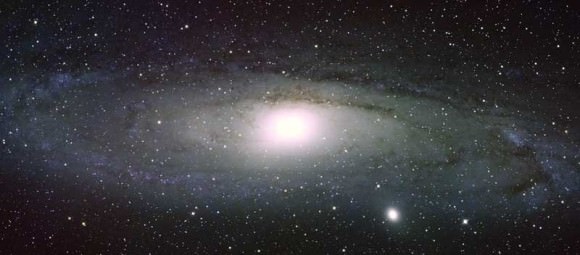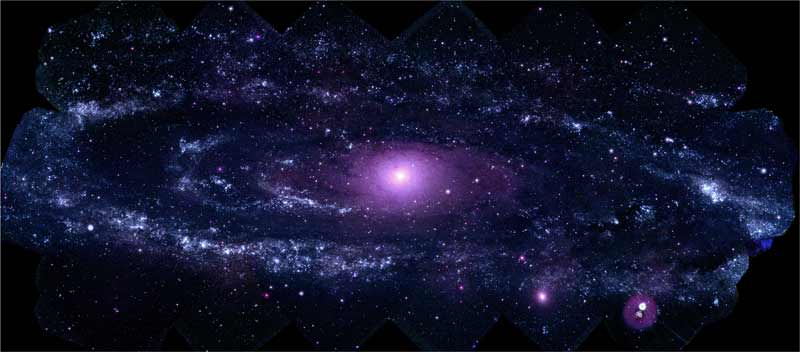[/caption]
Normally, the Swift satellite is searching for distant cosmic explosions. But recently it took some time to take a long look (total exposure time: 24 hours) with its ultraviolet eyes at the Andromeda galaxy, a.k.a. M31. The result is this gorgeous image. “Swift reveals about 20,000 ultraviolet sources in M31, especially hot, young stars and dense star clusters,” said Stefan Immler, a research scientist on the Swift team at NASA’s Goddard Space Flight Center. “Of particular importance is that we have covered the galaxy in three ultraviolet filters. That will let us study M31’s star-formation processes in much greater detail than previously possible.”
Compare this image to an optical version taken by a ground-based telescope:

M31, also known as the Andromeda Galaxy, is more than 220,000 light-years across and lies 2.5 million light-years away. On a clear, dark night, the galaxy is faintly visible as a misty patch to the naked eye.
Between May 25 and July 26, 2008, Swift’s Ultraviolet/Optical Telescope (UVOT) acquired 330 images of M31 at wavelengths of 192.8, 224.6, and 260 nanometers.
“Swift is surveying nearby galaxies like M31 so astronomers can better understand star- formation conditions and relate them to conditions in the distant galaxies where we see gamma-ray bursts occurring,” said Neil Gehrels, the mission’s principal investigator. Since Swift’s November 2005 launch, the satellite has detected more than 400 gamma-ray bursts — massive, far-off explosions likely associated with the births of black holes.
For more info on this image see this page from NASA. There’s also a podcast from Swift about this image, as well.

